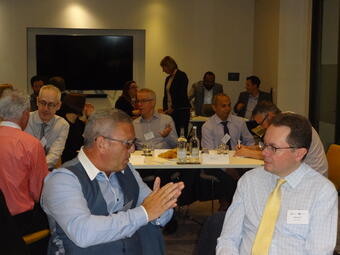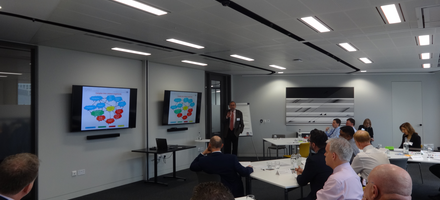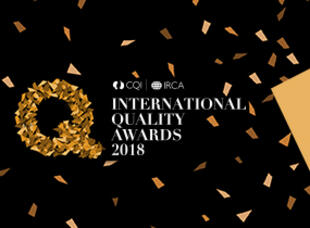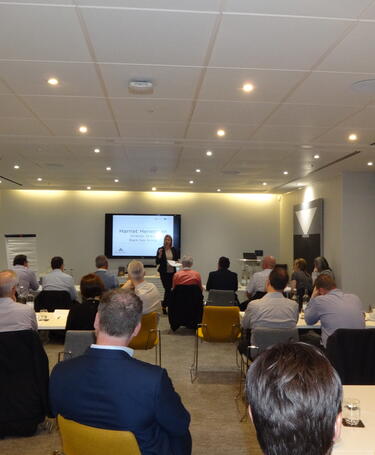
Getting your message across
Progress indicator
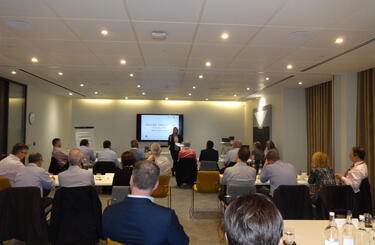
The topic for CQI’s third Corporate Connect event of the year was how quality professionals should engage with their audience and make their communications truly compelling.
The CQI Corporate Connect event ‘High impact communication – communicating with outstanding engagement’ took place on the 23 May, in London. The interactive presentation was conducted by Harriet Heneghan, Director at Black Isle (Europe), who talked about compelling communication with an audience of quality professionals from different backgrounds.
Heneghan started by suggesting that the attendees should always question the aim of their communications: “Put yourself in the listener’s shoes. Think what are the key issues for them?” She explained that there is no point in wasting the listener’s time, by preparing something that will not add value or be remembered by them.
The Pyramid Model
Grabing and sustaining your audience’s attention can be a challenge, even when you are presenting an interesting topic. In order to help the attendees surpass this challenge, Heneghan introduced the Pyramid Model. This model shows the ‘key message’ and ‘core supporting points’ as the tip of a pyramid, followed by ‘evidence’ and Q&A (questions and answers).
Heneghan explained the model saying that, in order to persuade your audience effectively, you should start with the finer point of your message. “Ask yourself: What do you want the listener to think, feel and do as a result of your communication?”
“I’ll give you a top tip,” Heneghan said, “if you are struggling with a message, tell another person, and then ask that person to tell your message back. Sometimes we know so much about our message, that we don’t think about how to better deliver it to someone that doesn’t know as much about the subject.”
Only after you have delivered your key message, can you add some details about the foundations of your idea or its background. “Get your audience to believe and act upon your finer point, by backing it up with your arguments afterwards,” Heneghan said. “Put yourself in the listener’s shoes and structure your evidence logically, so that it is easy to follow.” She said two or three core supporting arguments are enough, as any more will dilute the message and might tire your audience. Heneghan advised the use of data, case studies, examples, stories or logical analysis to deliver evidence that backs up and proves the key message.
How do you handle difficult questions?
“Short answers are more memorable and more believable.” Heneghan stressed that short answers are also simpler to give. “People are not looking for you to download everything you know on the subject.” She added that keeping emotions in check, being pleasant and staying calm are also important tips. She said that the key is to show you are trustworthy, and this can be more important than showing how much you know.
Heneghan said that before answering a question, you should pause, and then make sure to answer the question directly, even is the response is ‘I don’t know’. This reinforces trust between the speaker and the listener. Heneghan then explained the Trust Equation, a model to measure trustworthiness through the variables of credibility, reliability, intimacy and self-orientation.
Taking the message home
Darren Rusling, Head of Quality and Systems at Network Rail, and one of the event’s attendees, said that the key message that he is taking home is: “Think about your message, especially when you have to deliver it to high level executives. Those people don’t have time to understand all the context, and they trust you anyway, so be concise, understand what you are asking for, and get that over.”
Rusling added that his favourite part of the event was the way the presenter interacted with the audience. “Listening to other people’s views was very interesting because many times I thought: I have something very similar to that.”
“This event was very relevant for my role because I have to communicate with executives. I recognise that, when we do reports on the back of our quality findings, we have to be very concise and pass the key message upfront,” commented Susan Walford, Head of Quality and Systems at Network Rail Infrastructure Projects in the Southern Region. “I think the presenter was excellent, extremely engaging.”
Talking to Alicia Dimas, Content Executive for the CQI, at the end of the event, Heneghan said that the key message she would like attendees to take home from this event is: “Keep it simple, if you want people to remember and trust you message.” She said she is confident that the audience understood this. She added that, in fact, some people already knew how to effectively deliver a message, but needed some practice, and others thought they knew, but actually didn’t.
Commenting on the feedback that some quality professionals gave, about how their companies did not encourage simple and straightforward communication, Heneghan stressed that: “Best practice communication still needs to fit with the culture of the organisation, or else it will make you stand out for the wrong reason. So, you have to adapt it to the organisation, but I would still say: Be brave!”
"Keep it simple, if you want people to remember and trust you message,” Heneghan
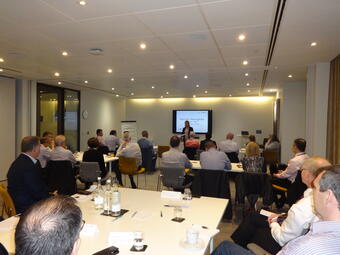
The event took place on the 23 May, in London
